Yoga for stress relief – is relaxation really the answer?

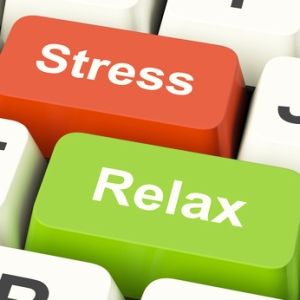 In recent years, yoga has become a go-to tool for stress management, and very often, it’s being presented as “Yoga for relaxation and stress management,” with an assumption that those two are similar, if not the same. But if you look closely at the actual physiological reaction that takes place in the body in response to stress, it becomes clear that relaxation is NOT the first order of business when it comes to stress management. What is it then? Let’s take a look.
In recent years, yoga has become a go-to tool for stress management, and very often, it’s being presented as “Yoga for relaxation and stress management,” with an assumption that those two are similar, if not the same. But if you look closely at the actual physiological reaction that takes place in the body in response to stress, it becomes clear that relaxation is NOT the first order of business when it comes to stress management. What is it then? Let’s take a look.
Let’s ask ourselves first – what is stress? This is how MedicineNet.com describes it: “Stress is simply a fact of nature – forces from the inside or outside world affecting the individual. Because of the overabundance of stress in our modern lives, we usually think of stress as a negative experience, but from a biological point of view, stress can be a neutral, negative, or positive experience.”
In other words, it’s impossible to have a stress-free life because stress is ANY change that happens within us or in our environment. Now, the bigger question is how we deal with it. Nature has equipped us with a handy mechanism that is designed to regulate our stress response: the autonomic nervous system. ANS regulates individual organ function and homeostasis (state of internal balance). For the most part, it is not subject to voluntary control. ANS consists of 2 distinctive parts: Sympathetic (Fight or Flight) and Parasympathetic (Rest and Digest) systems. They work in opposition – whenever one is being activated, another one is being suppressed.
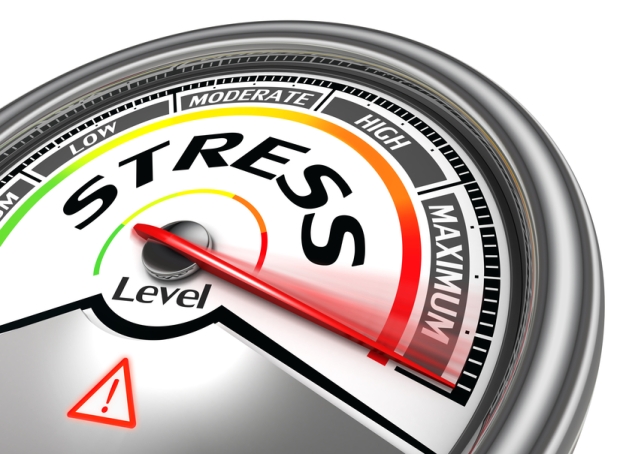 I like to think of the SNS as the accelerator and the PNS as the brake. Just like the accelerator in your car, you need a sympathetic response to get you anywhere in life; it’s the driving force. And, of course, you need brakes to slow down and stop when necessary. Now, the trouble begins if you get stuck in the acceleration mode – you can drive yourself into a wall, run out of gas, and, in general, it is not sustainable for a long period of time because it puts incredible wear and tear on your system. It seems simple – well, just STOP when you need to! It’s not so easy. And when we suggest “relaxation techniques” for stress management, this is exactly what we are asking to do – to flip the switch from sympathetic to parasympathetic in an instant.
I like to think of the SNS as the accelerator and the PNS as the brake. Just like the accelerator in your car, you need a sympathetic response to get you anywhere in life; it’s the driving force. And, of course, you need brakes to slow down and stop when necessary. Now, the trouble begins if you get stuck in the acceleration mode – you can drive yourself into a wall, run out of gas, and, in general, it is not sustainable for a long period of time because it puts incredible wear and tear on your system. It seems simple – well, just STOP when you need to! It’s not so easy. And when we suggest “relaxation techniques” for stress management, this is exactly what we are asking to do – to flip the switch from sympathetic to parasympathetic in an instant.
Imagine this hypothetical scenario: you are driving down a dark country road and suddenly see a deer in front of you. That’s quite the stressor! Let’s say you managed to maneuver around it and keep driving, left with all the signs of SNS activation: fast, shallow breathing, sweaty hands, pounding heart, and overall sense of panic. And your passenger says: “Oh, just stop it. Get over it.” Could you? Probably not. But there is something you COULD DO to begin the process. What is it?
Let me give you a hint. A recent study analyzed the occurrence of PTSD in 911 witnesses and found that it was much lower in the group of people who ran after they had witnessed the attack. Why? Because they MOVED!
After encountering a stressor, the body is flushed with adrenalin (to set stress response into action); energy is being pulled away from the “maintenance” bodily functions and directed toward large skeletal muscles (so that you could fight or run away).
But you are still stuck in your car after your dear encounter with no room to move. If you do not have an opportunity to release the built-up energy through movement, it will be much harder for you to return to the state of balance. Repressed physical/emotional response to stressors significantly exaggerates the physiological response.
 So what would be a better solution to our imaginary scenario? To stop at the nearest rest stop and run around your car, do some jumping jacks – whatever. MOVEMENT is the answer. Ideally, the intensity of movement should correlate with the intensity of the stress response.
So what would be a better solution to our imaginary scenario? To stop at the nearest rest stop and run around your car, do some jumping jacks – whatever. MOVEMENT is the answer. Ideally, the intensity of movement should correlate with the intensity of the stress response.
That’s how it works in the animal kingdom. Zebras don’t get stressed, for example, even though their lives are often at risk from predators. When the zebra outruns the lion, it can calmly resume its usual activities without exhibiting any signs of stress. It’s because the adrenalin and other hormones have been reabsorbed into the system, the process facilitated by galloping away. That’s why exercise works so well for humans in stress management and needs to be done consistently, preferably soon after the intense stress response. To read more about stress and how it affects our bodies on different levels, check out a wonderful book by Robert Sapolsky, Why Zebras Don’t Get Ulcers.
Another benefit of movement, and especially yoga movement, is that it gives you a chance to get out of the “Stress loop.” 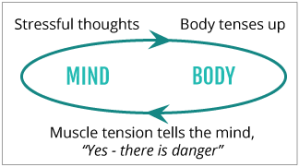 If you relieve the physical tension that accumulates in your body in response to your stressful thoughts, your body will stop sending alarm messages to your brain that something is wrong. It helps if you target the areas that tense up the most due to stress, like the neck, shoulders, and upper back.
If you relieve the physical tension that accumulates in your body in response to your stressful thoughts, your body will stop sending alarm messages to your brain that something is wrong. It helps if you target the areas that tense up the most due to stress, like the neck, shoulders, and upper back.
If you teach a yoga class and stress relief is on the agenda, it would be more effective to start with some fast movements that involve large muscle groups and then gradually slow down the pace, deepen the breath, and bring the students closer to the ground. It makes more sense than starting with seated postures and breathwork, for example. We want to meet our students where they are (fatigued yet jittery after a long and stressful day) and take them where they want to go (more calm, stable, and balanced).
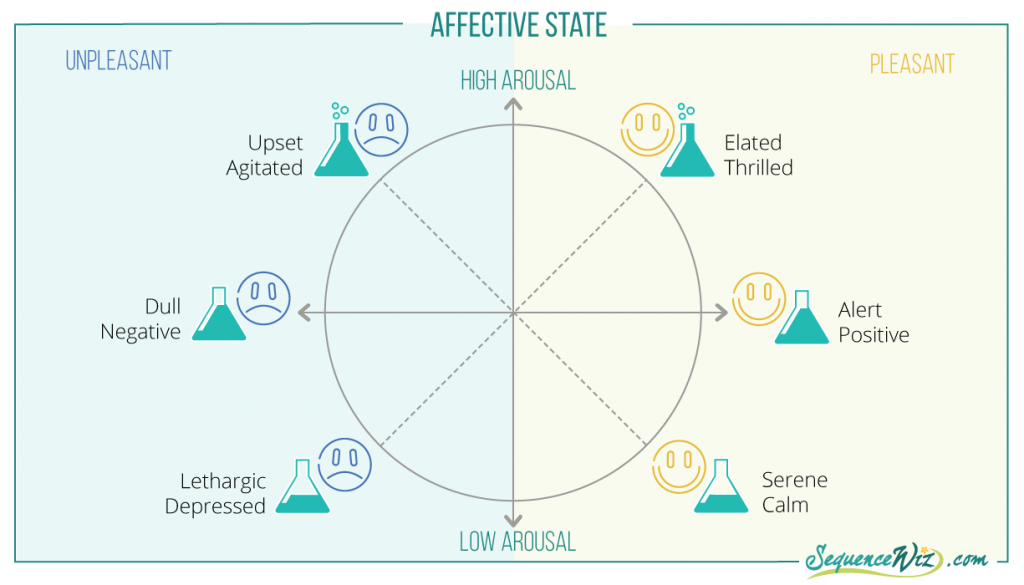
Everything you subject yourself to in your daily life has some effect on your affect. Any activity or situation can be stimulating or sedating, and more or less pleasant. As you become more conscious of the current state of your “body budget,” you can make conscious choices about activities and situations that move it closer to the state of balance.


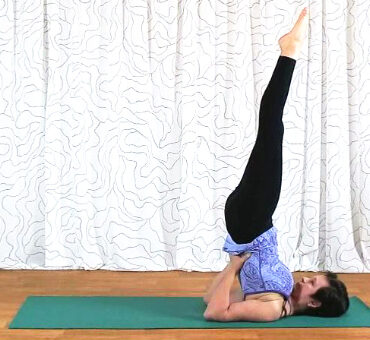




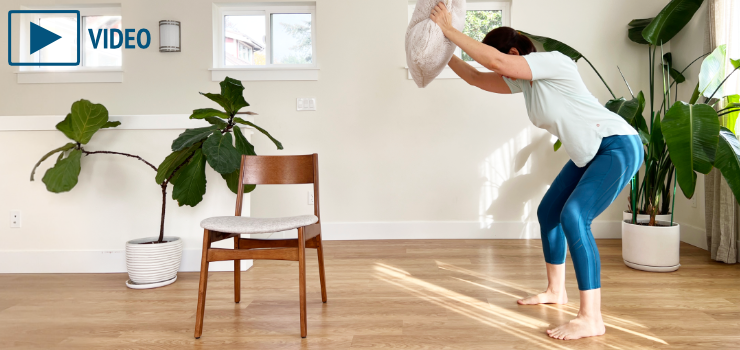
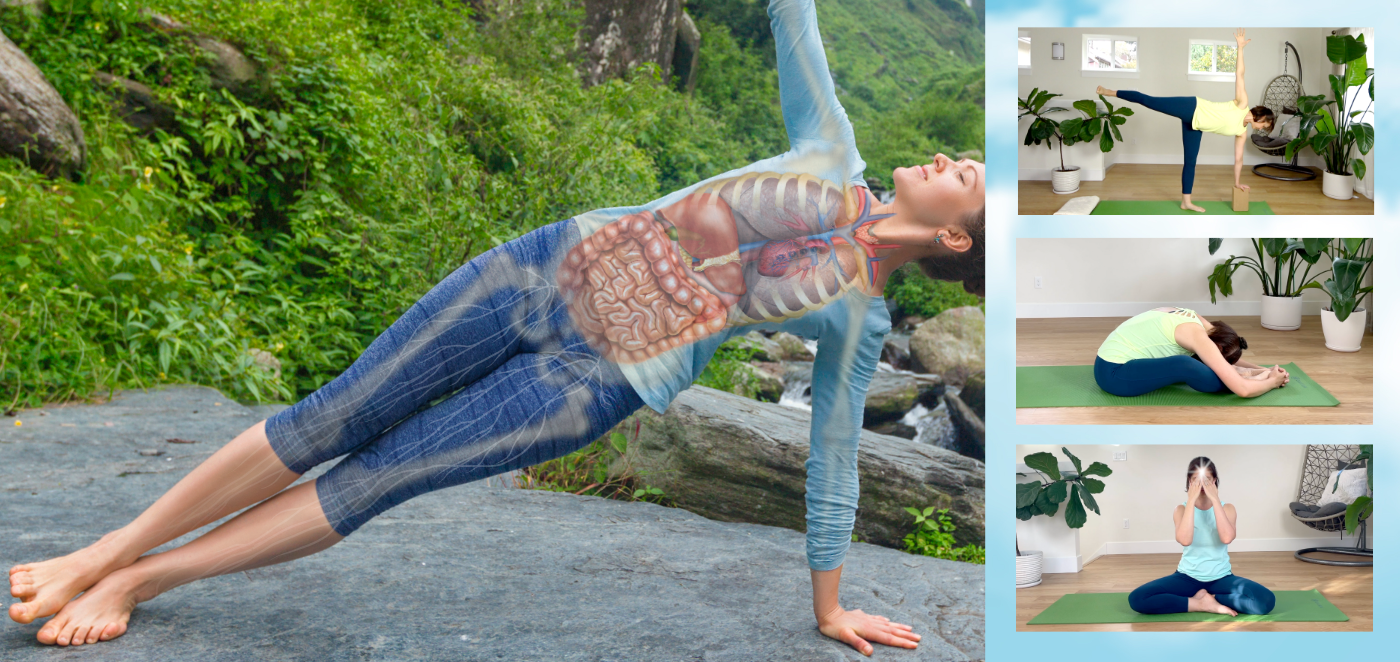
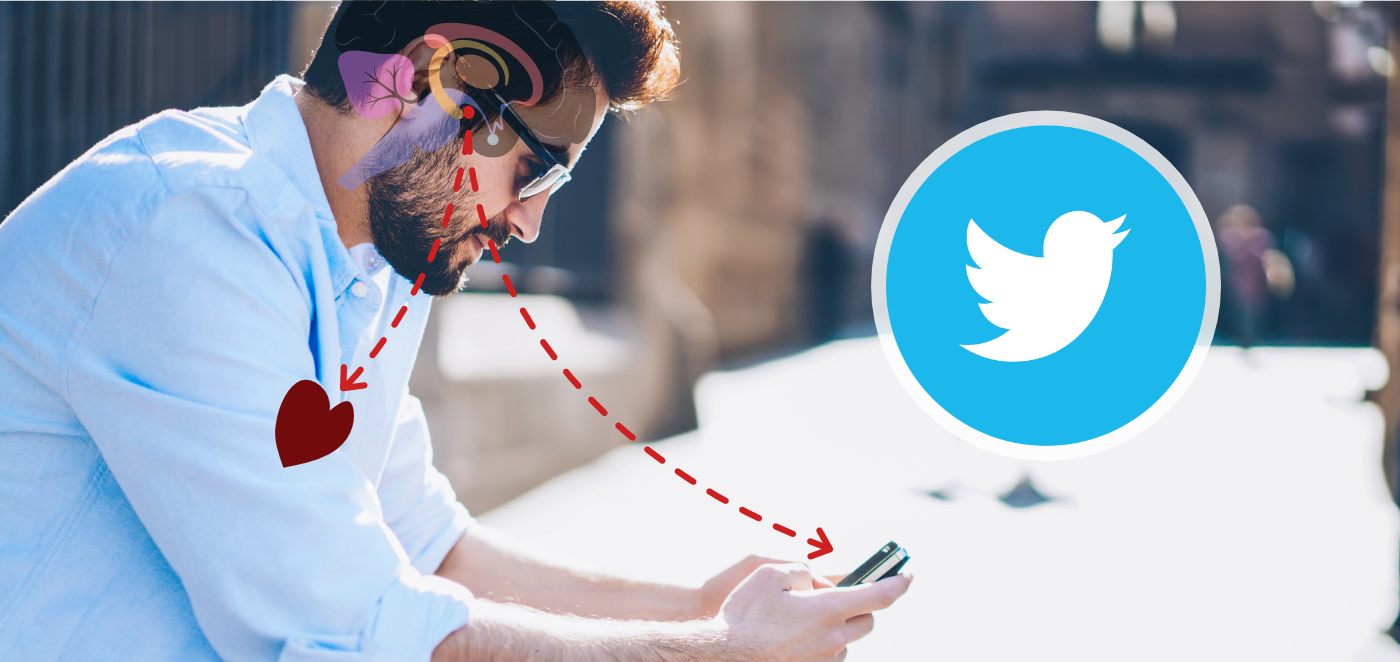
Thanks for this article. I think I knew this on an intuitive level but your explanation really makes sense.
So Thanks!
You are very welcome, Judy!
Hi,
the article you are citing about PTSD related to 9/11 does not mention running in any way…? Did I miss that part?
Thanks,
Clemens